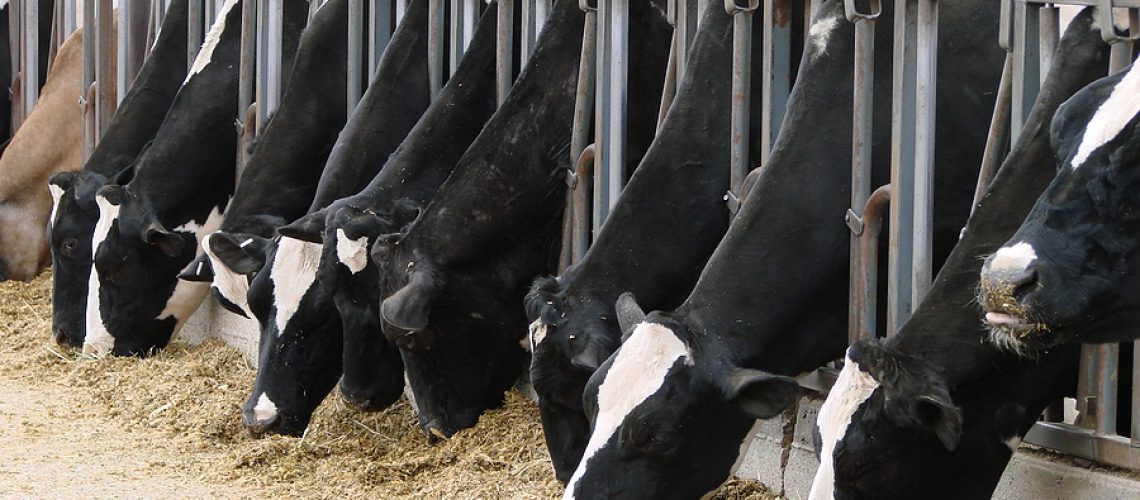The health and well-being of a dairy cow are paramount to any dairy farmer. Keeping livestock diseases at bay for your dairy investment to guarantee high production is synonymous with observing high hygiene standards on your farm.
Those high standards of hygiene will require more than regular soap and water. You will need disinfectants most of the time. But there are different kinds of disinfectants, and they don’t all clean the same.
So, before you start attacking dirt and pathogens:
- What kind of germs do you want to fight?
- What type of material is the surface you want to clean?
- How should you disinfect and how frequently?
Any efforts in cleaning and disinfecting are directed towards protecting both the cow and the milk from disease-causing organisms. Well, your dairy farm has different sections that may require you to handle them differently so that the efforts you put into cleaning and disinfecting do not go to waste.
Let’s analyze each one of them:
The Milking Parlor
The same way you clean the milking machine daily, do the same to the milking parlor. Being a highly frequented area, you need to rinse with clean water after every use and disinfect it twice a day.
Why?
Think about it, a milking parlor has a lot of structures, right? That means the area is densely populated and, therefore, a perfect breeding ground for pathogens if left unattended.
Individual Buildings/Boxes
For dairy cows, housing hygiene is also paramount. Cleaning your cow’s immediate surroundings will keep pathogens and diseases at bay. You can control the frequency and gravity of diseases like mastitis by improving the hygiene of the lying condition of your cow.
Milk produced in an unclean environment is likely to get contaminated and consequently have a short shelf-life. There is also the risk of transmitting pathogens to humans.
Manure management is also a big part of housing hygiene. Dung and urine from your cow are very useful as manure, but if not properly managed, they can become a source of pathogens.
Calf Pens/Calf Hutches/Calving Boxes
Once you realize that your cow will be calving soon, you can’t afford to sit pretty and wait for things to happen. That is first because when calves are born, their immune system is not fully developed. The mother is also not any different because she will also be more susceptible to diseases at her calving time.
You already can tell that that calls for more cleaning and more disinfecting.
From the onset, your calf is pre-exposed to:
- Calf pneumonia
- Calf scours (diarrhea)
- Neonatal calf diarrhea (NCO)
Viruses, bacteria, and parasites can cause either of these to your weak calf, but disinfecting will go a long way in protecting it. Use a broad-spectrum disinfectant that is effective against all three pathogens.
When it comes to cleaning for your calf, it will involve in large part cleaning the colostrum collection equipment after every use and regularly disinfecting to prevent any buildup of biofilm.
Human Hands and Boots
Your hands and those of your workers are another way pathogens can move from one place to another. That’s why you need to keep a skin-friendly broad-spectrum disinfectant on your farm.
Frequent hand and boot disinfecting on your farm are necessary before and during milking and in between two groups of animals like cows and calves to avoid any risk of transmitting germs and diseases.
An effective footbath disinfectant should also be broad-spectrum and fast-acting. The disinfectant is likely to get soiled due to the organic dirt from the boot. Make it a habit, therefore, to change the disinfectant regularly to retain its effectiveness.
Rinsing off massive particles of dirt before disinfecting will allow the disinfectant to stay effective longer.
Hand and boot cleaning should not be limited to just you and your workers. Any external people like visitors should go through the ritual too. Better still, have a boot cleaning station at the farm entry to make it evident for anyone coming in.
Milking Machine
If you don’t want to use up your hard-earned cash on medication, then clean that milking machine. And we are not talking about some random cleaning; you need a strict cleaning and disinfecting habit.
You see, a dirty milking machine makes mastitis more prevalent and affects the quality of the milk your cow is producing.
Any equipment that comes into contact with the milk should be cleaned immediately after use, using either an alkaline or an acid. Avoid the temptation to have such equipment sitting idle without being washed first.
The Cow/Calf
Cleaning everything around your dairy cow is good, but you are not done until your cow is also clean.
A dirty cow is susceptible to these three common diseases lowering its production:
- Mastitis
- Infertility
- Lameness
Apart from infertility, the other two are infectious and can be controlled through cleaning and disinfecting.
To keep such infections at bay, your cow needs to stay clean. Pay special attention to the cow’s teats and hooves.
Teats
A cow’s teats are vulnerable to mastitis, a disease common in dairy cattle. Mastitis will reduce both the quality and quantity of the milk your cow produces.
When several cows share one milking machine during milking, it becomes easy for pathogens to travel from one cow to another. Any bacteria on the teat during milking will find its way into the milk.
That’s why your daily milking routine should include:
- Disinfect the teats and dry them with a disposable paper towel before milking. If you cannot access a paper towel, a cloth towel will work well if laundered between uses.
- Regularly disinfect the dip cups and spray bottles that you use to apply disinfectant to the teats.
- Use hot water with chlorine to wash the reusable cloth towels and dry them thoroughly before re-using them. If using a washing machine to launder them, avoid overloading to allow enough space for thorough cleaning and drying.
- After milking, disinfect the teat again to kill any pathogens that might get to the teats during milking.
- Apply teat dips two to three times a day.
- Use an appropriate disinfectant that will not cause other adverse effects to the cow, such as dryness and eventual cracking of teats.
What about when the cow is in its dry period?
Even during the dry period, maximum environmental hygiene of your cow is paramount. Ensure that your cow lays in clean and dry beddings that are cleaned and changed regularly.
Hooves
If you don’t pay enough attention to your cow’s hooves, you will have to deal with some severe financial losses. That’s because your cow is likely to develop lameness leading to a high cost of treatment, low milk production, and you might have to do some culling for the affected animals.
What is the solution?
Here prevention is better than cure.
Disinfect your cow’s hooves with the correct disinfectant. The correct one should be able to reach pathogens deep into the tissues.
You can use footbaths or hoof mats to apply the disinfectant. Regularly replenish the disinfectant to remain effective for longer.
On your dairy farm, the risk of infection and spreading of pathogens is high. That comes hand-in-hand with the risk of low production and eventual financial losses. The good news is, all those risks can be mitigated by simply cleaning and disinfecting the right way.


